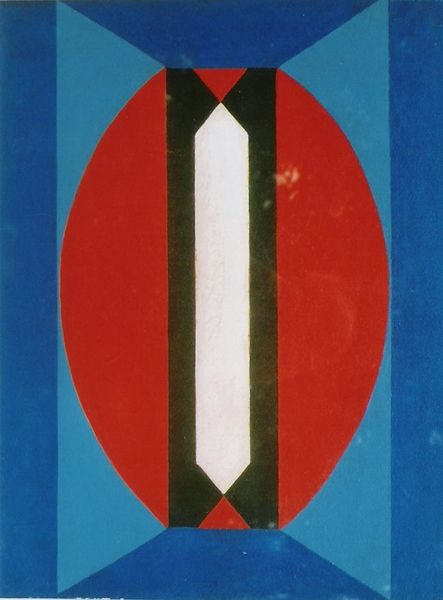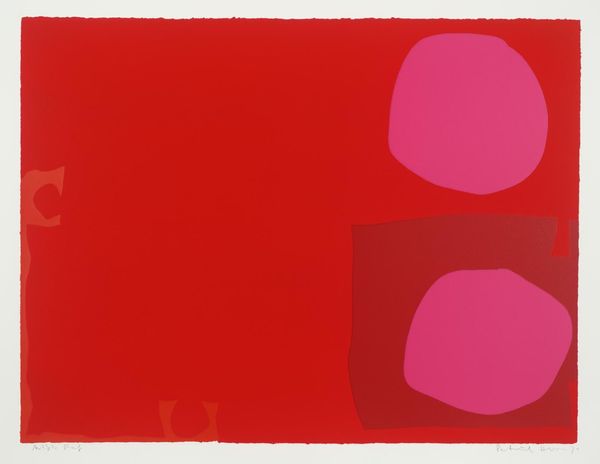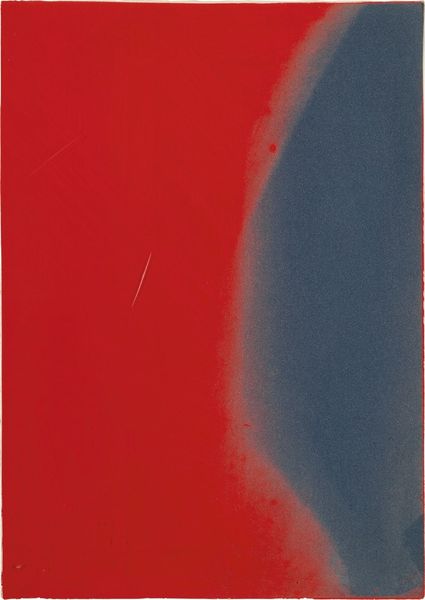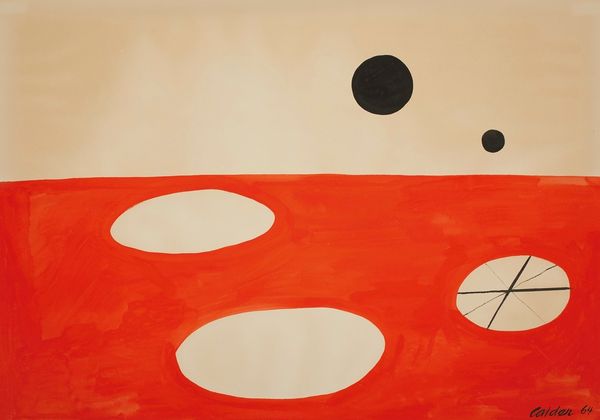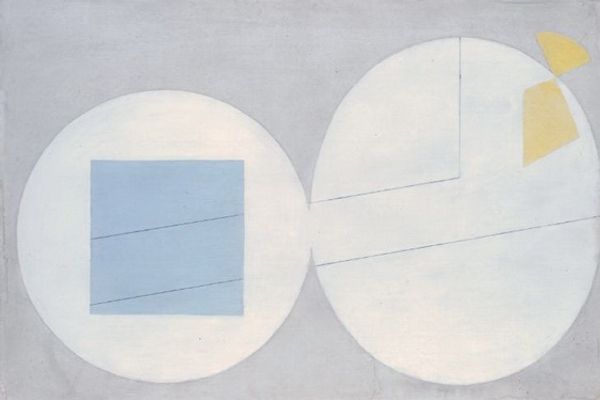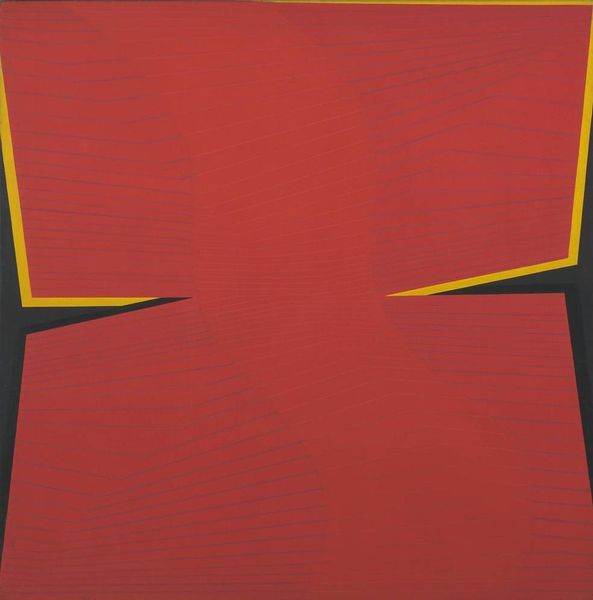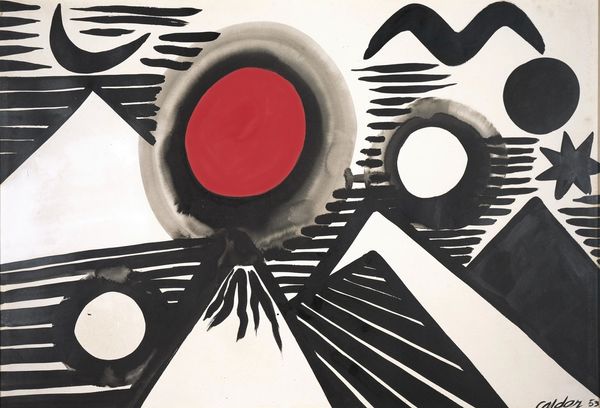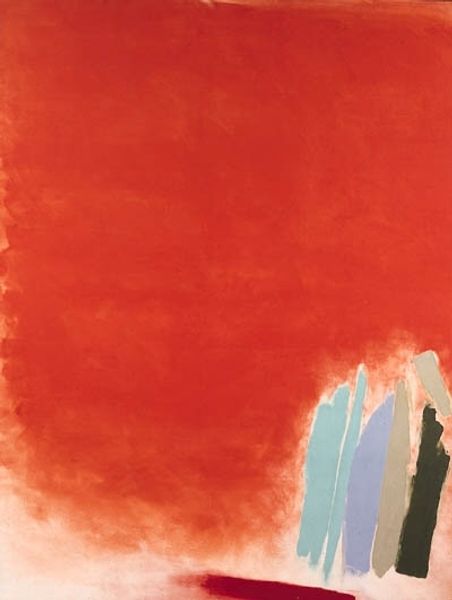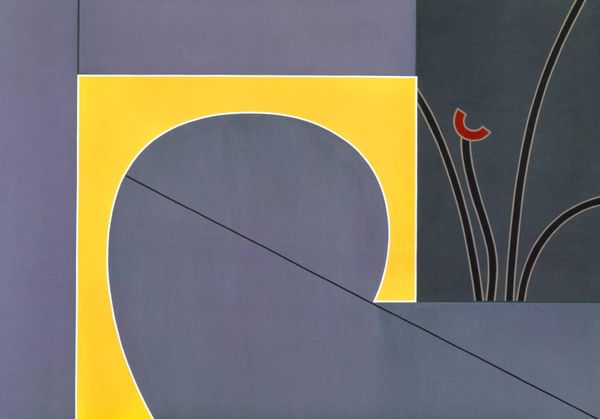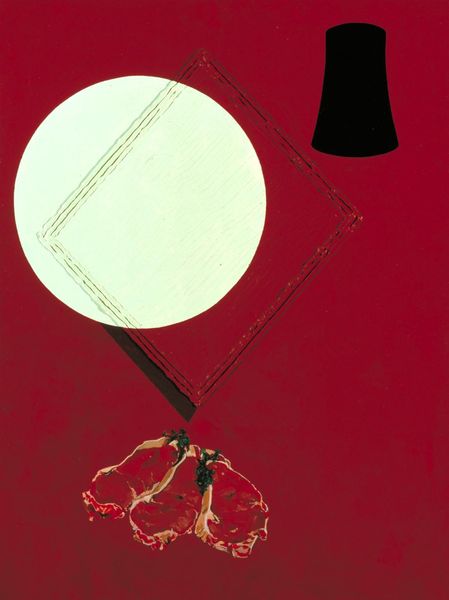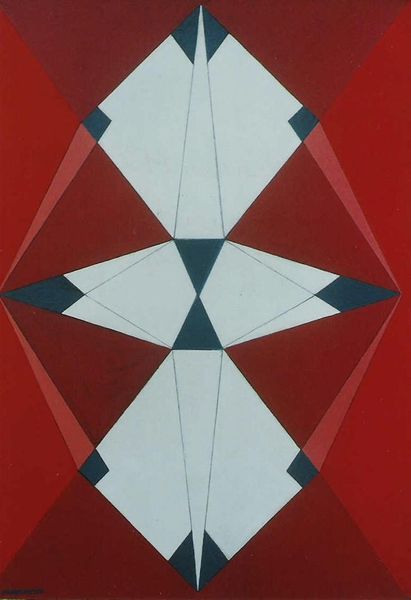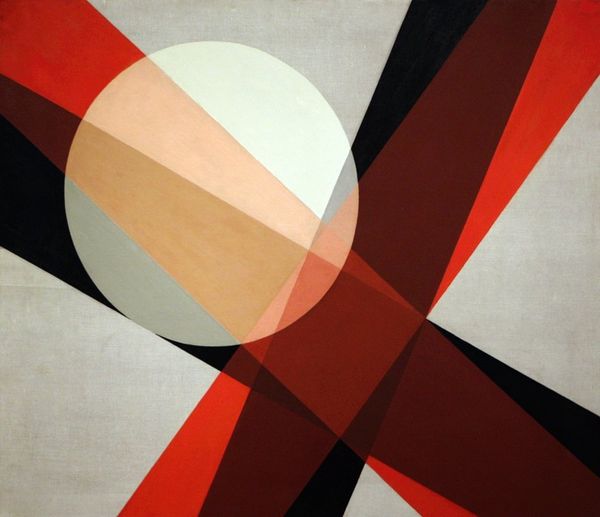
acrylic-paint
#
stencil
#
op art
#
constructivism
#
acrylic-paint
#
abstract
#
geometric
#
abstraction
Copyright: Public Domain: Artvee
Curator: Welcome. Before us hangs L\u00e1szl\u00f3 Moholy-Nagy's "Composition G4," crafted in 1926, rendered with acrylic paint. A key example from his constructivist period. What's your immediate take? Editor: My first impression is one of dynamic tension, visually vibrating from the strong use of red. There’s a stark contrast, however, between the intense backdrop and the lone, pale blue circle; almost a relief in the visual space. Curator: The interplay of geometric forms really embodies the spirit of the Bauhaus movement, which deeply influenced Moholy-Nagy. This piece demonstrates his pursuit of pure abstraction and an embrace of industrial aesthetics in art. How do you see that connection influencing the piece? Editor: Absolutely. It also seems that this was the historical context that was experimenting with non-objective representation, but I see echoes of Russian Constructivism with its goal to reflect modern industrial society. I can also argue for its political dimension. It offers itself up, openly and democratically as opposed to art rooted in inaccessible history and myth, no? Curator: I would say the use of the grid system, the layering of shapes—they all speak to a fascination with machines and mass production that defined this era. The application of stencils allows for these crisp shapes and gradients. In art historical terms, how does the materiality play a role in reading the work? Editor: For sure! Consider, too, how the lack of visible brushstrokes intentionally obscures the artist's hand. Its opaqueness and almost translucent gradients achieve a dynamic effect, like light moving over machine surfaces and bringing together two critical points on abstraction. And in its embrace of this modern aesthetic, what social conventions is it hoping to dissolve? What norms did they intend to fight with this break in aesthetic philosophy? Curator: That question, really, strikes at the heart of this work, pushing towards art’s broader role. It invites critical questioning about art’s engagement with technology and industry that continues to this day. Editor: Precisely! By diving into these geometric relationships and challenging artistic conventions, we find reflections of progress and societal evolution, still very much relevant in our modern landscape.
Comments
No comments
Be the first to comment and join the conversation on the ultimate creative platform.

